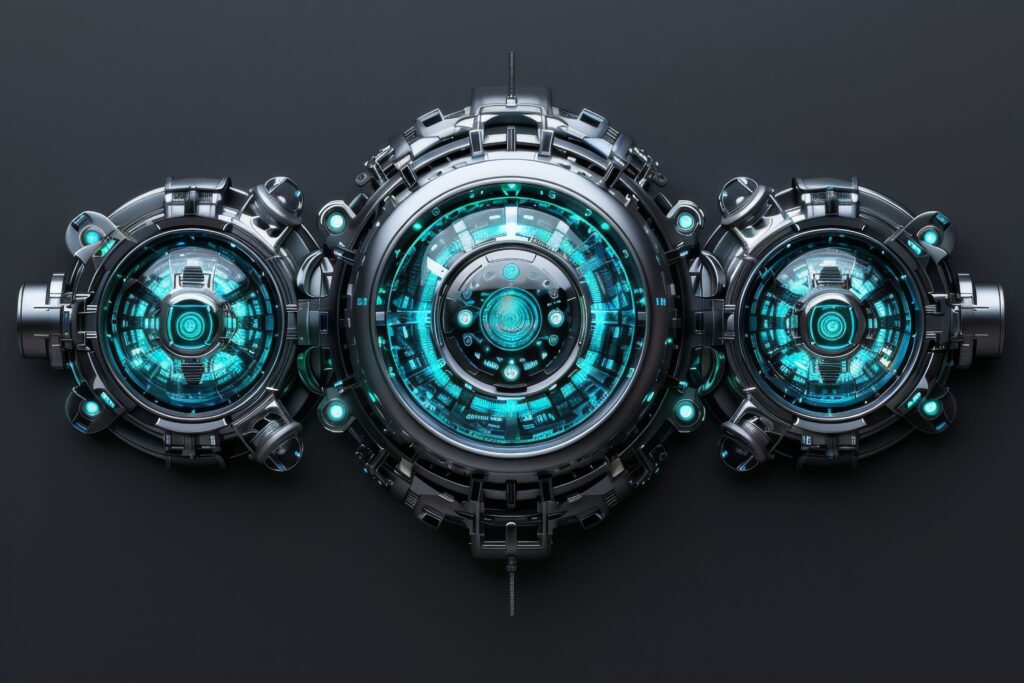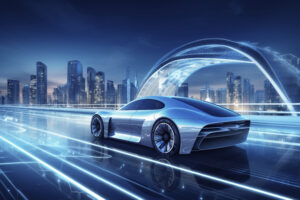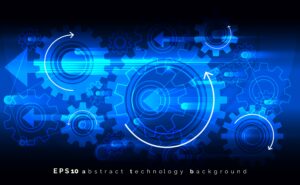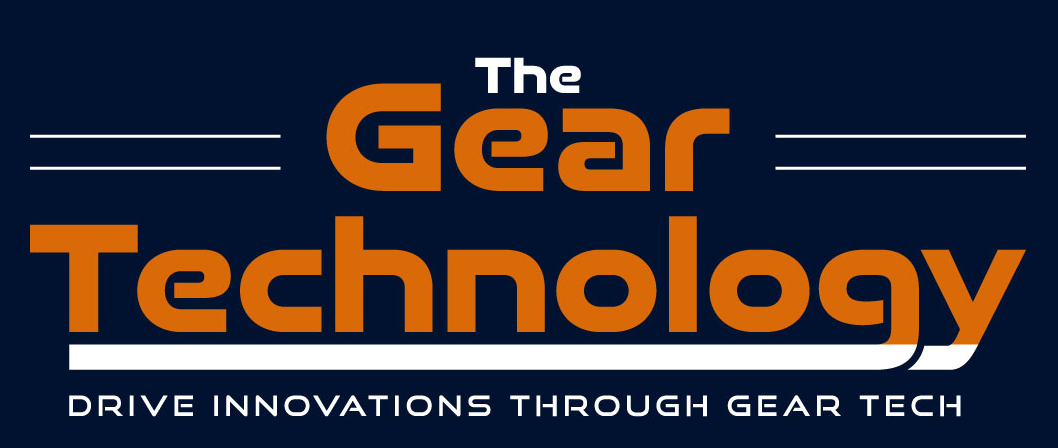Revolutionary Gearbox Designs Propelling EV Innovation
EV Gearbox Innovations The electric vehicle (EV) revolution is in full swing, with automakers worldwide racing to develop more efficient, powerful, and sustainable cars. At the heart of this transformation lies a crucial component often overlooked by the average consumer: the electric vehicle transmission. As we delve into the world of EV gearbox innovations, we’ll […]

EV Gearbox Innovations
The electric vehicle (EV) revolution is in full swing, with automakers worldwide racing to develop more efficient, powerful, and sustainable cars.
 At the heart of this transformation lies a crucial component often overlooked by the average consumer: the electric vehicle transmission. As we delve into the world of EV gearbox innovations, we’ll explore how these advancements are shaping the future of transportation and driving EV drive train optimization.
At the heart of this transformation lies a crucial component often overlooked by the average consumer: the electric vehicle transmission. As we delve into the world of EV gearbox innovations, we’ll explore how these advancements are shaping the future of transportation and driving EV drive train optimization.
Traditional internal combustion engine vehicles rely on complex multi-speed transmissions to optimize performance across various driving conditions.
However, the inherent characteristics of electric motors – namely their ability to deliver instant torque and operate efficiently across a wide range of speeds – have led many to question the necessity of gearboxes in EVs.
Courtesy: Freepik Images
Despite this, innovative gearbox designs are proving to be game-changers in the quest for improved EV gearbox efficiency, performance, and driver experience. The latest trends in electric vehicle transmission technology, explore the debate between single-speed vs multi-speed EV transmissions, and highlight the groundbreaking materials and smart gearbox control systems that are revolutionizing EV gearbox design.
Lightweight Materials and Noise Reduction

One of the most significant innovations in EV gearbox design is the development of lightweight gearbox materials. As automakers strive to extend the range of electric vehicles, reducing the overall weight of the vehicle becomes crucial.
Advanced composites and high-strength alloys are now being used to create gearboxes that are not only lighter but also more durable than their traditional counterparts.
These lightweight materials contribute to improved EV gearbox efficiency by reducing energy loss due to inertia and friction. Additionally, they help in noise reduction in EV gearboxes, addressing one of the key concerns in electric vehicle design.
The quieter operation of EVs makes any noise from the drive train more noticeable, so minimizing gearbox noise is essential for passenger comfort.
Another area of innovation is in thermal management in EV gearboxes. Electric motors and batteries generate significant heat during operation, and efficient thermal management is crucial for maintaining optimal performance and longevity of the drivetrain components.
Advanced cooling systems integrated into gearbox designs help dissipate heat more effectively, allowing for sustained high performance and preventing premature wear of components.
Single-Speed vs Multi-Speed EV Transmissions
The debate between single-speed and multi-speed EV transmissions continues to drive innovation in the industry. While many electric vehicles on the market today use single-speed transmissions due to the wide torque band of electric motors, some manufacturers are exploring the benefits of multi-speed EV transmissions.
Proponents of multi-speed transmissions argue that they can further optimize the efficiency of electric motors, particularly at highway speeds or in performance-oriented vehicles.
By providing multiple gear ratios, these transmissions can help electric motors operate in their most efficient range more often, potentially extending the vehicle’s range and improving overall performance.
However, the added complexity and weight of multi-speed transmissions must be balanced against their potential benefits.
This has led to the development of innovative two-speed and three-speed gearboxes that aim to provide the advantages of multiple ratios without significantly increasing weight or complexity.
Regenerative Braking Integration
Regenerative braking systems have become a standard feature in electric vehicles, allowing them to recapture energy during deceleration.
However, innovative gearbox designs are taking this concept further by optimizing the integration of regenerative braking with the transmission system. Advanced gearboxes now incorporate sophisticated control mechanisms that seamlessly transition between drive and regenerative braking modes, maximizing energy recovery while maintaining smooth vehicle operation.
This integration not only improves overall efficiency but also enhances the driving experience by providing more natural deceleration characteristics.
Some cutting-edge designs even allow for variable regenerative braking forces to be applied through the gearbox, giving drivers more control over the vehicle’s deceleration and energy recovery.
This level of customization not only improves efficiency but also caters to individual driving preferences.
Smart Gearbox Control Systems
Smart gearbox control systems are at the forefront of EV drive train optimization. These intelligent systems use advanced algorithms and real-time data to make split-second decisions about gear selection, torque distribution, and power management.
By continuously adapting to driving conditions, road topology, and driver behavior, smart control systems can significantly enhance EV gearbox efficiency and overall vehicle performance.
These control systems often integrate with other vehicle systems, such as the battery management system and regenerative braking, to create a holistic approach to energy management.
For instance, the gearbox control system might preemptively shift to a more efficient gear ratio when approaching a hill, based on GPS data and vehicle speed, to optimize energy consumption.
Moreover, some advanced systems employ machine learning techniques to adapt to individual driving styles over time, further refining the vehicle’s performance and efficiency.
This level of customization not only improves the driving experience but also helps to maximize the range and longevity of electric vehicles.
Advanced Noise Reduction Techniques
Noise reduction in EV gearboxes remains a critical area of focus for engineers and designers. Unlike internal combustion engines, which produce a significant amount of noise that can mask transmission sounds, electric motors are inherently quiet.
This means that any noise from the gearbox becomes much more noticeable and can impact the overall perception of vehicle quality and comfort.
Innovative approaches to noise reduction include the use of helical gears with optimized tooth profiles, which engage more smoothly and quietly than traditional spur gears.
Additionally, advanced bearing designs and the use of sound-absorbing materials within the gearbox housing contribute to quieter operation.
Some manufacturers are even exploring the use of active noise cancellation technologies specifically targeted at gearbox frequencies. These systems use strategically placed speakers to produce sound waves that cancel out undesirable gearbox noise, resulting in an ultra-quiet driving experience.
The Evolution of Multi-Speed EV Transmissions
As electric vehicles continue to evolve, the role of the gearbox in EV drive train optimization becomes increasingly crucial. While early EVs often employed simple, single-speed transmissions, the push for greater efficiency and performance is driving the development of more sophisticated multi-speed EV transmissions.
These advanced transmissions offer several advantages:
- Improved efficiency across a wider range of speeds
- Enhanced acceleration and top speed capabilities
- Potential for increased range through optimized motor operation
- Better performance in diverse driving conditions, such as highway cruising or steep inclines
However, the implementation of multi-speed transmissions in EVs presents unique challenges. Engineers must carefully balance the potential gains in efficiency and performance against factors such as added weight, complexity, and cost.
This has led to the development of innovative two-speed and three-speed gearboxes that aim to strike an optimal balance between simplicity and performance.
Thermal Management Innovations
Thermal management in EV gearboxes plays a critical role in maintaining optimal performance and longevity of electric power trains. As electric vehicles become more powerful and are driven for longer distances, managing heat buildup in the transmission system becomes increasingly important.
Innovative cooling solutions for EV gearboxes include:
Advanced lubricants specifically formulated for electric vehicle transmissions. Integrated cooling circuits that connect with the vehicle’s overall thermal management system. Phase-change materials that absorb excess heat during operation and release it during cooler periods
Intelligent thermal management systems that predictively adjust cooling based on driving conditions and battery state of charge
By effectively managing heat, these innovations not only protect the gearbox components from premature wear but also contribute to over all EV gearbox efficiency by reducing energy losses due to excessive heat generation.
The rapid pace of innovation in gearbox design for electric vehicles is reshaping the automotive landscape. From lightweight materials and smart control systems to advanced thermal management and noise reduction techniques, these developments are driving improvements in efficiency, performance, and user experience.
As the electric vehicle market continues to grow and mature, we can expect to see even more groundbreaking innovations in transmission technology.
The ongoing debate between single-speed and multi-speed EV transmissions will likely lead to further advancements, with each approach finding its niche in different vehicle types and use cases.
Ultimately, these innovations in EV gearbox design are not just about improving individual components; they’re about optimizing the entire electric vehicle drive train.
By pushing the boundaries of what’s possible in electric vehicle transmissions, engineers and designers are helping to create a more sustainable and exciting automotive future.

